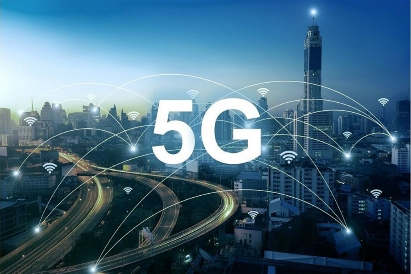
The investment in 5G technology infrastructure is a critical endeavor that can significantly shape the future of communications, technology, and numerous related industries. Here’s a comprehensive overview of what it involves, the benefits, key players, challenges, and strategies for successful investment.
1. Overview of 5G Technology Infrastructure – 5G technology provides faster data speeds, lower latency, and the ability to connect a higher number of devices compared to previous generations (like 4G). The infrastructure necessary to support this technology includes:







– **Cell Sites and Antennas**: Both macro towers and a dense network of small cells to ensure coverage and capacity.
– **Fiber Optic Backhaul**: High-speed fiber connections that facilitate data transfer between cell sites and the core network.
– **Data Centers**: Localized processing capabilities (edge computing) to handle real-time data requirements.
– **Advanced Network Equipment**: Routers, switches, antennas, and transmission technology that can handle the frequencies used in 5G.
#### **2. Importance of Investing in 5G Infrastructure**
– **Economic Growth**: The deployment of 5G can drive productivity, innovation, and economic growth across various sectors, including manufacturing, healthcare, transportation, and entertainment.
– **Job Creation**: The construction, operation, and maintenance of 5G networks will create jobs in various fields, from engineering to software development.
– **Enhanced Connectivity**: Improved internet access and reliability can facilitate technological advancements, enabling the rollout of new applications such as IoT, smart cities, autonomous vehicles, and telemedicine.
#### **3. Key Players in 5G Infrastructure Investment**
– **Telecommunication Companies**: Major telecom operators (such as Verizon, AT&T, T-Mobile, and international counterparts) are the primary investors in building and upgrading the 5G infrastructure.
– **Government Agencies**: Many governments are investing in or subsidizing 5G infrastructure to spur economic development, improve public services, and enhance national competitiveness.
– **Technology Corporations**: Tech companies specializing in network equipment (like Ericsson, Nokia, and Huawei) are critical players providing the necessary hardware and software solutions.
– **Venture Capital and Private Equity**: Investment firms are increasingly focusing on startups and companies that leverage 5G technologies or contribute to its infrastructure.
#### **4. Challenges in 5G Infrastructure Investment**
– **High Costs**: Building and deploying 5G infrastructure is capital-intensive. The return on investment can take time, which may deter some investors.
– **Regulatory and Permitting Delays**: Complex regulatory environments and local permitting processes can slow down deployment and lead to increased costs.
– **Technical Challenges**: Integrating new technologies, ensuring compatibility with existing systems, and maintaining reliable service can be technically challenging.
– **Market Competition**: As competition increases, telecom operators must balance investment in new infrastructure with the need to remain profitable amid market pressures.
#### **5. Strategies for Successful Investment**
– **Public-Private Partnerships (PPP)**: Collaboration between government entities and private companies can help share the financial burden and facilitate smoother deployment.
– **Phased Deployment**: Prioritizing network development in high-demand areas (urban centers, industrial hubs) can lead to quicker returns on investment before expanding to less populated regions.
– **Innovative Financing Models**: Exploring different financing options, including bonds, grants, and public funding, can alleviate upfront costs.
– **Focus on Edge Computing**: Investing in edge computing infrastructure can enhance the performance of 5G networks by reducing latency and improving data management.
– **Staying Ahead of Technology Trends**: Investing in research and development to stay at the forefront of 5G technologies, including network slicing, massive MIMO, and IoT applications, can increase competitive advantage.
#### **6. Future Outlook**
– **Growth of Related Industries**: As 5G infrastructure matures, we can expect accelerated growth in sectors such as IoT, autonomous systems, augmented reality, and telehealth.
– **Global Participation**: Countries around the world are racing to implement 5G technology and infrastructure, leading to global competition and collaboration.
– **Sustainability Considerations**: Future investments will likely prioritize sustainability, focusing on energy-efficient technologies and minimizing the environmental impact of network rollout.
### **Conclusion**
Investing in 5G technology infrastructure presents a unique opportunity for economic growth, technological advancement, and societal benefit. While the challenges associated with costs, regulation, and technical hurdles are significant, a strategic approach that includes collaboration between public and private sectors, innovative financing, and targeted deployment can maximize the benefits of this transformative technology. As 5G continues to evolve, its successful implementation will create a foundation for the future digital economy.


Leave a Reply